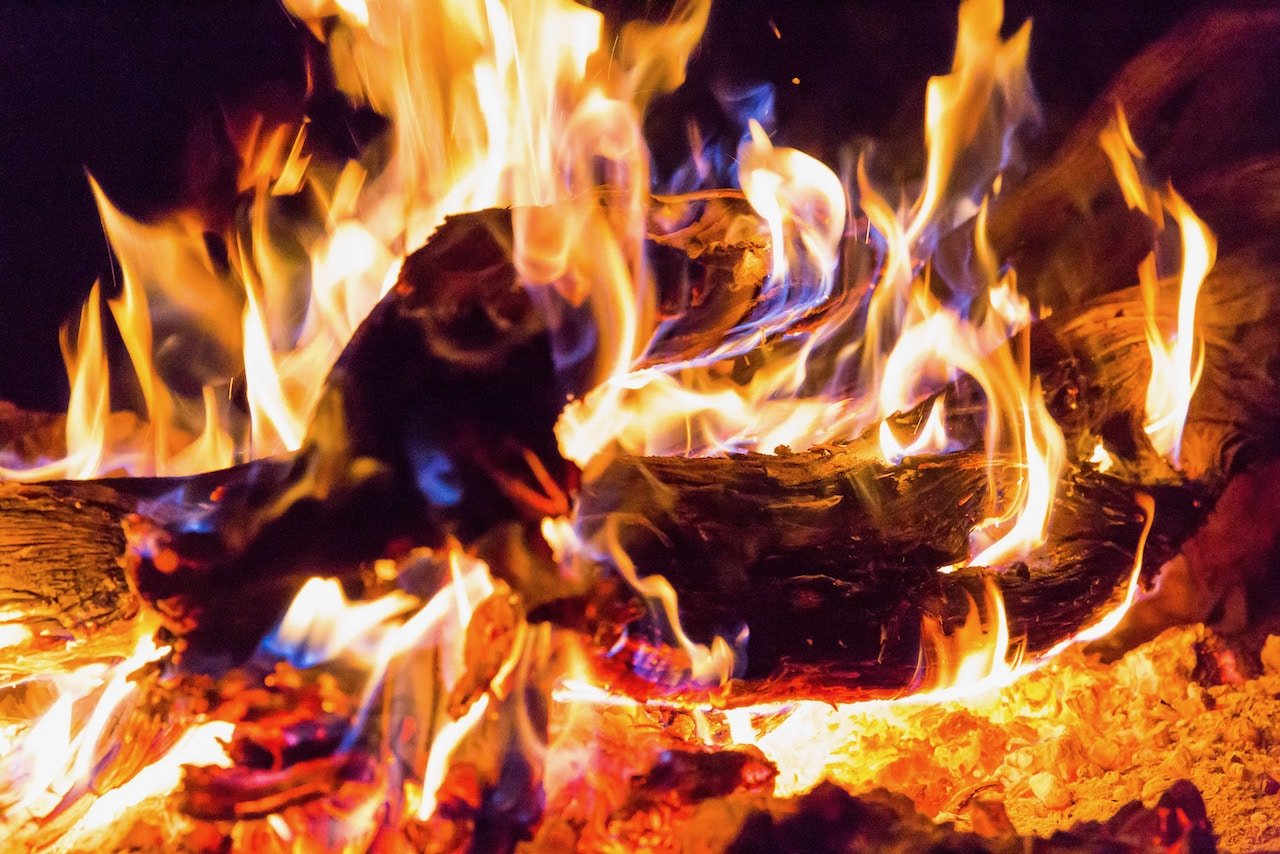Not much beats sitting around a great campfire but some still get it wrong without even knowing. These 19 tips will have you doing it like a pro.
Words and Images by Scott Mason
A campfire can be one of the greatest experiences in our travels. Sitting around one at the end of the day, staring into the mesmerising licking of flames and up at the stars… it just does not get any better.
But sadly, as recently evidenced on Fraser Island, some people do it wrong, and it really grates on all of us when that happens. And then there are bad campers who ruin the ambience with loud music, pluming dense smoke, rubbish and sheer disregard for the real dangers sour the experience. There is nothing worse than returning to a favourite campsite to see multiple fire-scars, littered rubbish or even evidence of a campfire gone out of control.
Well let’s help put an end to that. These 19 reminder tips are your guide to becoming a doyen of campfires, a seasoned expert who does the right thing every time; and ensuring our camps stay pristine for years to come.
Fire Ban = No Fires!
Simple, right? Yet some still get it wrong. Don’t be that idiot. Check local conditions before heading out on your trip (call the local Parks office) and if in doubt do not light fires… and dob in the fools who do.
Gathering Timber
Generally our National Parks are no-go zones when it comes to collecting firewood. Unless specifically stated, you can bet the kids on it being outlawed. That means you need to plan beforehand and bring your own wood. Heavy fines apply in most Parks, and in some cases you can even be fined for carrying a chainsaw.
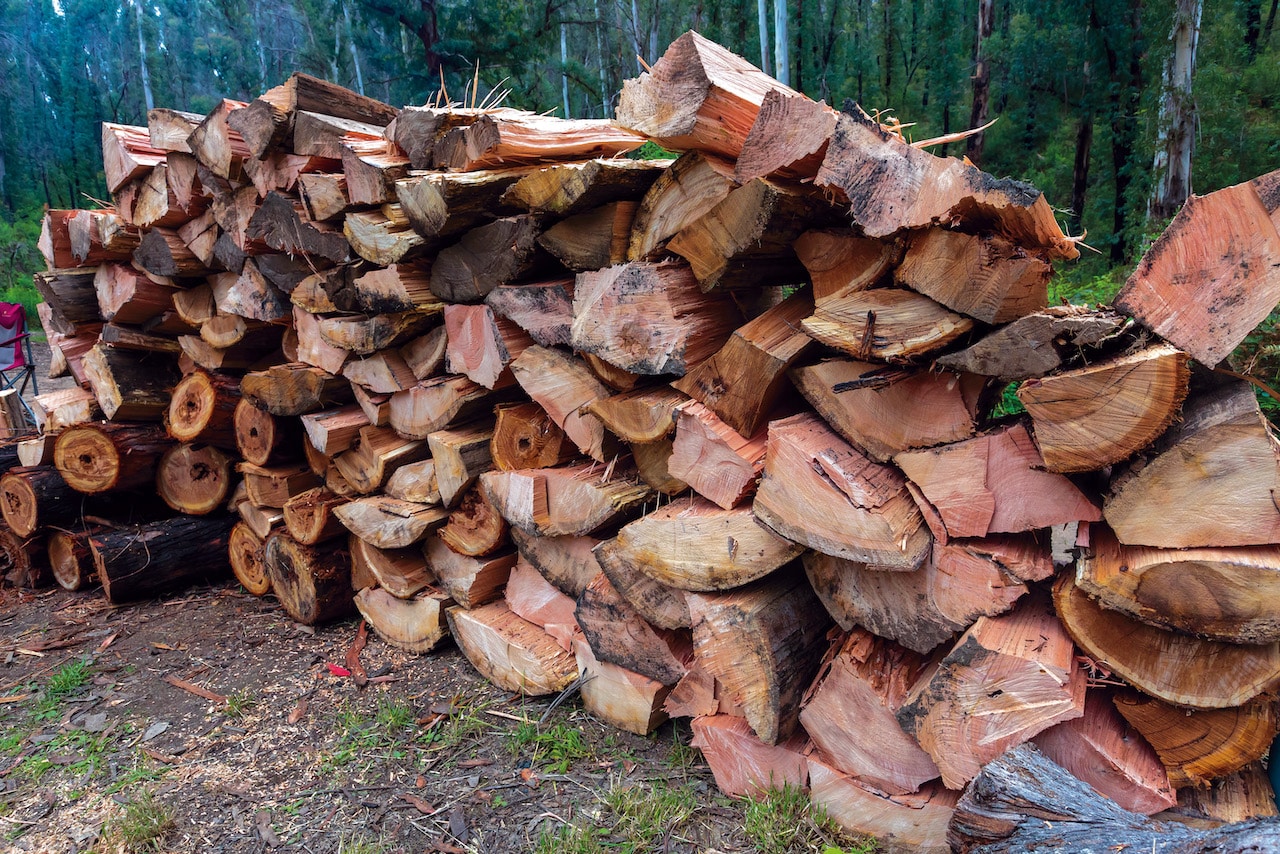
Fire-Scars
Most campsites have established fire pits so there is no need to create a new one. If everyone created a new fire-scar we would very soon be visiting pockmarked barren wastelands with no grass whatsoever. Just don’t do it.
Huts
No rules carved in stone here, but generally the hut associations and Parks do not approve people staying in any hut unless it is an emergency. It is a bitter pill to swallow, especially when you see somebody else doing it; but be the bigger person. An unspoken agreement here is at play, for sure. Respect the wishes of the people who donate their time and money toward maintaining our high country huts – they are legends. If you have to use one, then make sure you leave timber and tinned food when you depart (for those who may need it in an emergency).
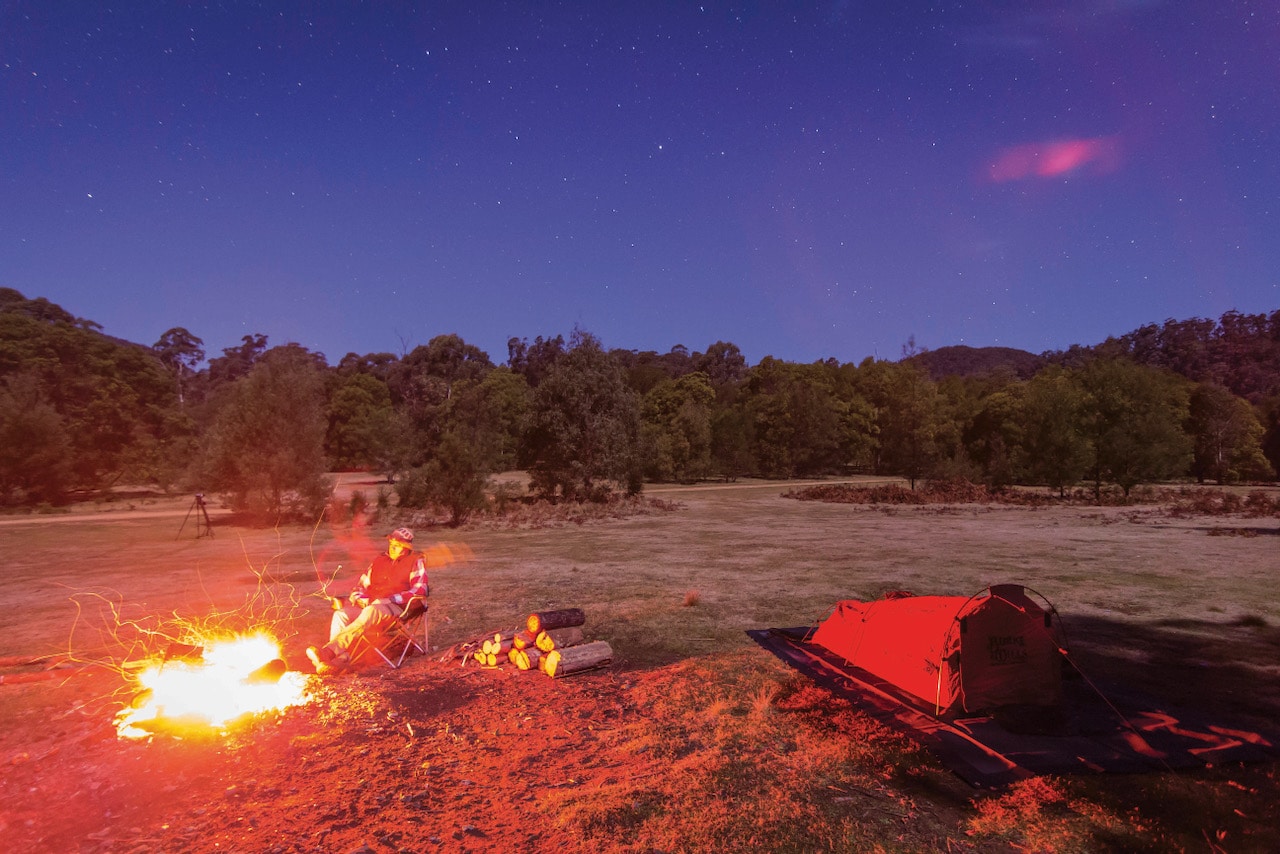
Coal Management and Fire Size
You only need a fire that is big enough to keep warm, not a raging KKK-spec inferno that spits coals and ash into the neighbouring states. Nobody likes to walk around a blackened and scarred landscape except volcanologists – so keep it reasonable and occasionally clean up the fire surrounds during your stay. When you leave ensure the area is clean and tidy for the next visitor.
Kids and Fire
Kids and fire means rules. Talk with them beforehand; make rules and create non-negotiable boundaries. Nothing will ruin your trip and their life quicker than a medivac flight to the burns unit. Set it out, right from the start. Make them understand the dangers and make things as safe as you possibly can around the campfire.
Use the Noggin
If the wind has just started howling and your fire is throwing embers into the bush, then take measures. Move a car to use as a wind-block (if minor); dial the fire right down; or simply extinguish it. Your night will get a whole lot worse if you have just triggered a bushfire… nobody will thank you for that and you may even die. Use your discretion and make the right decisions.
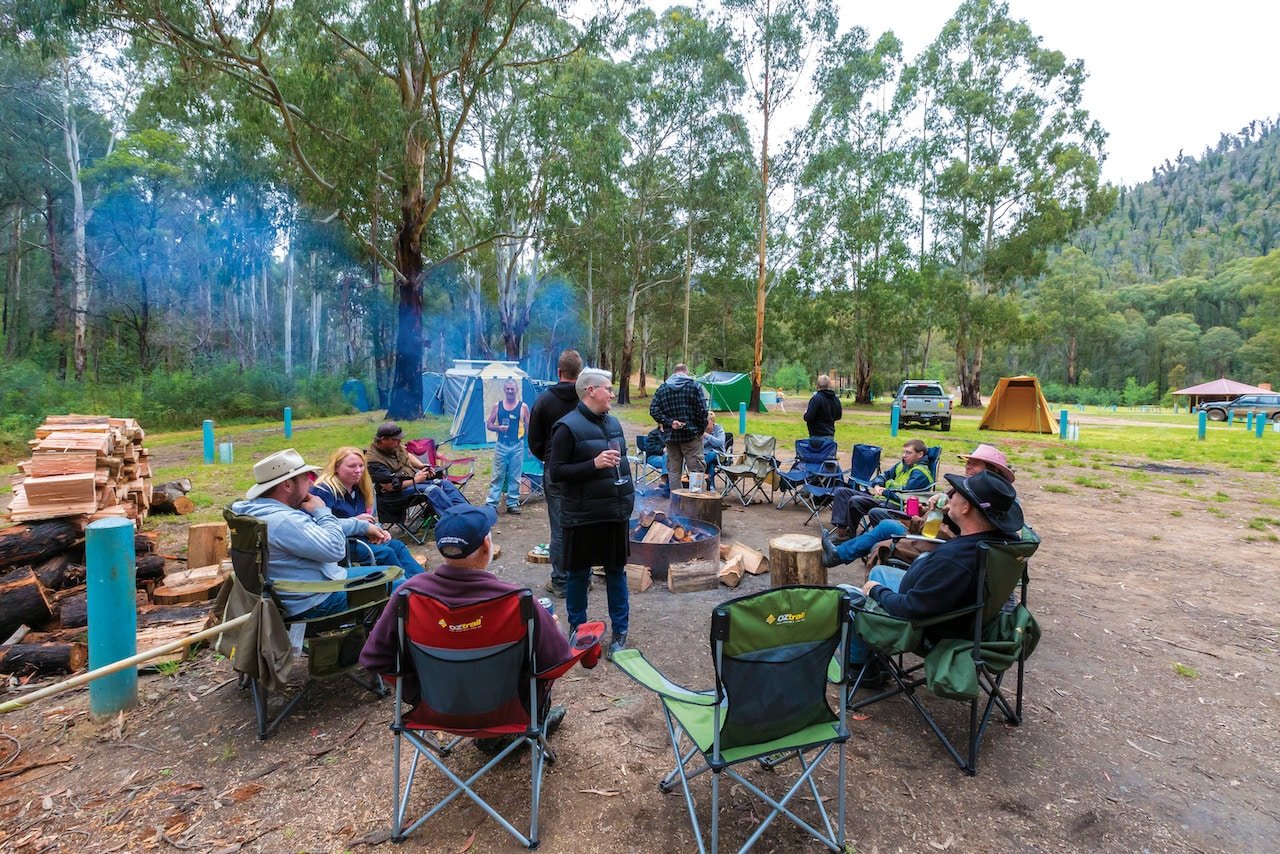
Keep the Area Clear
Mother Nature will throw dried leaves, grass and bark around the campfire. Before you start it – sweep all the debris away to keep the fire contained. Flying embers can easily ignite the fire surrounds and get out of hand very quickly. Not only that, but you will also be reducing trip hazards and the likelihood of falling accidentally into the fire. This includes protruding rocks and even your own timber stack (which can become difficult to see in the dark).
A Fire means you need Appropriate First-Aid
Bandaids and Savlon are not going to cut the mustard when dealing with a burn. Nope, you need to get properly provisioned for burns and have what you need on-hand. Cold flushing water, bandages and an evacuation plan are needed for serious stuff. As a bare minimum you should use a Jelonet dressing (available at pharmacies), then a non-stick dressing, followed by a crepe bandage to reduce the chance of infection and further damage until treated by a professional. If you are not prepared, then a clean tea-towel doused in constant flowing clean cold water is essential. Cold treatment is a must to mitigate the burning.
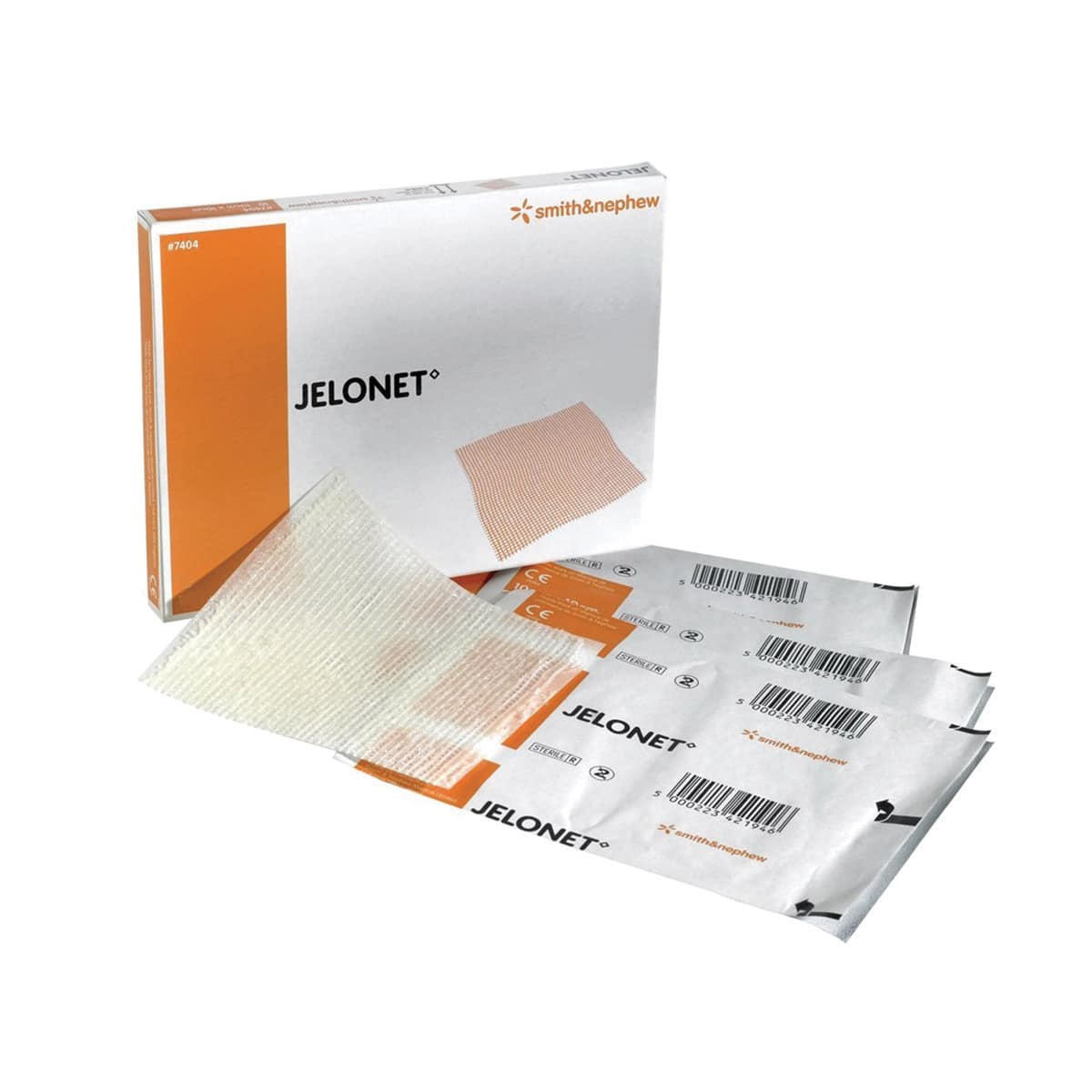
Fire Blanket and Extinguisher
A fire blanket can be used to safely smother a small unwanted outbreak around the fire or on the stove. Likewise extinguishers can not only save your car, but can also be used to douse a fire… they’re pretty damn handy, so why not pack ’em?
Rubbish Tip
The campfire is not this. Paper and cardboard? Yes, sure. But anything other than that does not have a place in the campfire. The $20 ALDI camp chair that just broke should not see its demise in the flames, nor should that beer stubby or empty braised beef tin. Even if you reach above 1200°C, that stuff will only melt into the pit. It will never disappear. It will just morph into one crappy hard lump. Put rubbish into your rubbish bag and take it away with you.
Bottle Lids
The outdoor equivalent of stepping on a LEGO brick is stepping on a twist-top cap. It hurts. Apparently, for some people, they are so small they cannot be carried back home and hence need to pepper the campsite? Nope; take them home with you.
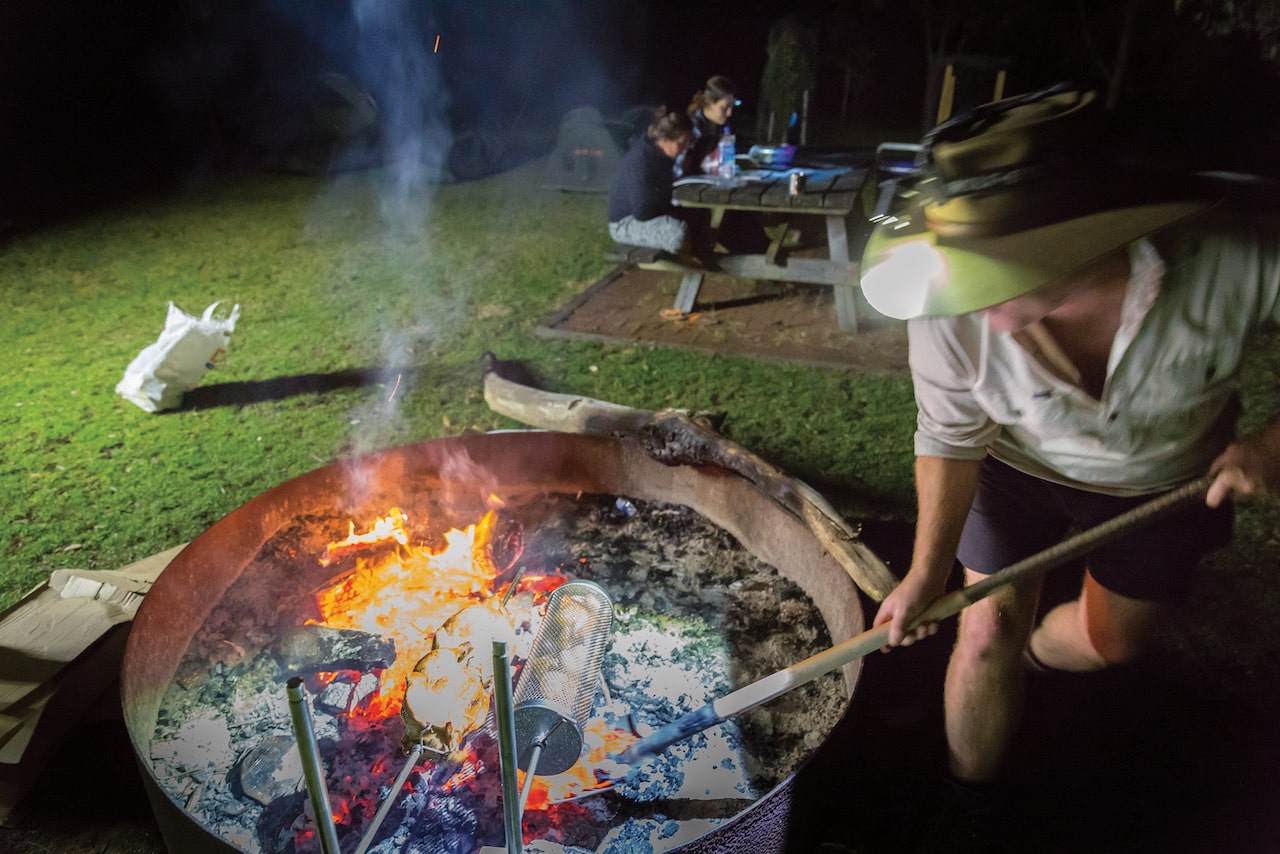
Aerosol Cans
These just do not have a place anywhere near a fire… ever. They are more evil than both of The Conjuring movies combined, but for real.
Fire and Music
Just because you are having an awesome time around the fire does not mean you can turn the volume dial up to 10. Celine Dion, Pan Pipes Unleashed, Dire Straits, Billy Ray Cyrus or Acca-Dacca; it does not matter, your music taste really sucks to everyone else around you.
Know your Wood
The best burning timbers are the properly dried hardwoods. If it’s wet, green or throwing a heap of smoke, then your fire is inefficient and possibly smoking out the campground. Buy or select good timber for the fire. Soft woods are also a common mistake; they are great for starting a fire but will burn out quickly and will only throw quick bursts of heat. Hardwood is popular for a reason – just like Ron Jeremy, learn to buy it or recognise it. You will love the difference.
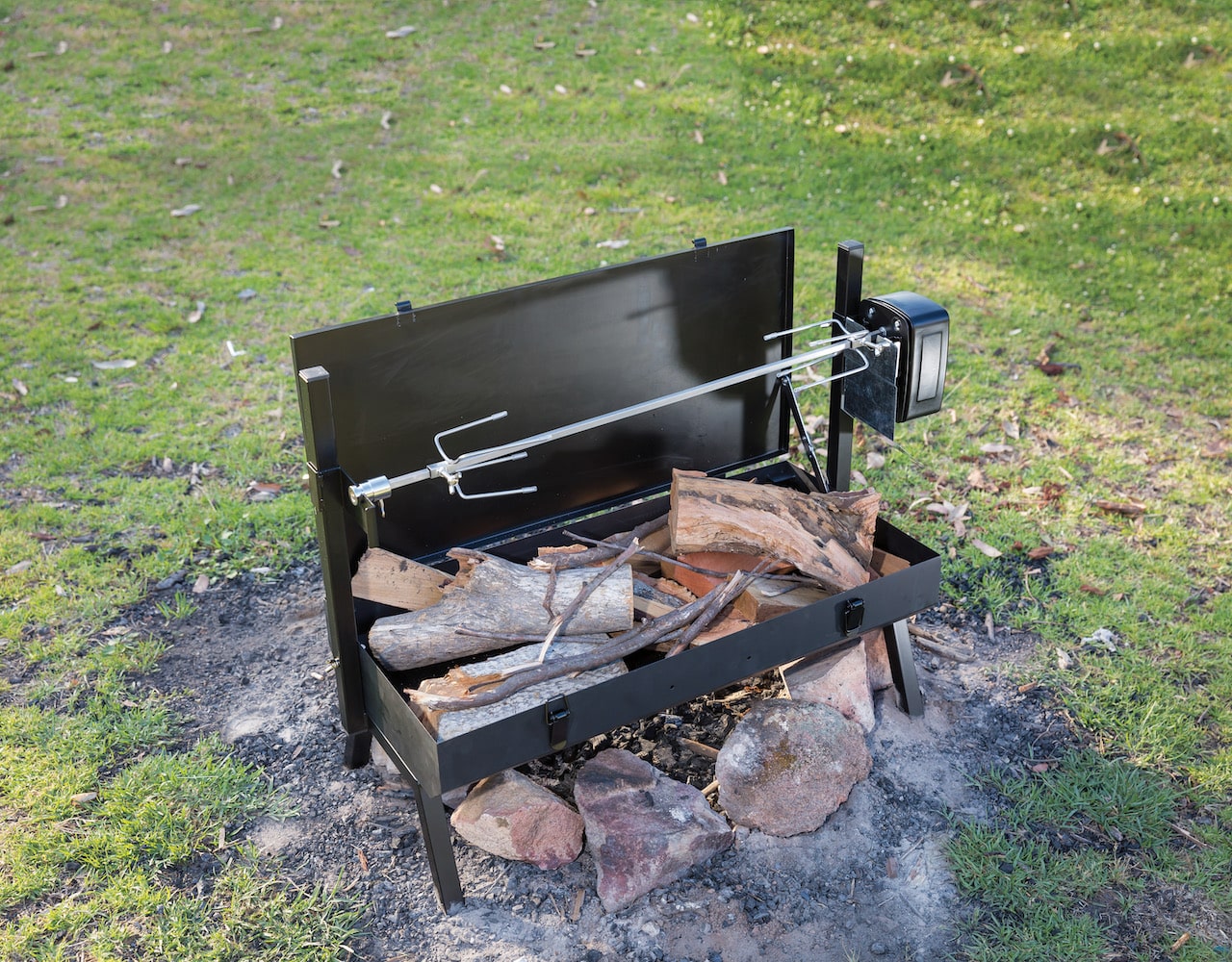
Fires in the Sand
Woe betide the fool who covers a fire with sand!
It just keeps on cooking. Yep, sand is a great insulator of heat, and just because the flames and hot timbers have gone below the surface that does not mean much with sand – it is like an underground oven. Maoris call it a Hangi and it is how they cook some foods (very well, too).
Many adults, and children in particular, have been hospitalised due to stepping on an apparently clean part of beach which has concealed a previous fire. Beach fires need solid dousing to take away the heat, just like any other fires.
Hot Bums
Placing hot coals from the fire under your camp chair may feel great on a cold night, but it does nothing for the campsite. All it does is kill the underlying grass and leave a large blackened mess… a great way to ruin the fire surrounds.
Tending the Fire
If you plan on leaving the fire, say for a walk or a drive, then see point 19 below. Conditions can change at any moment and so can that fire.
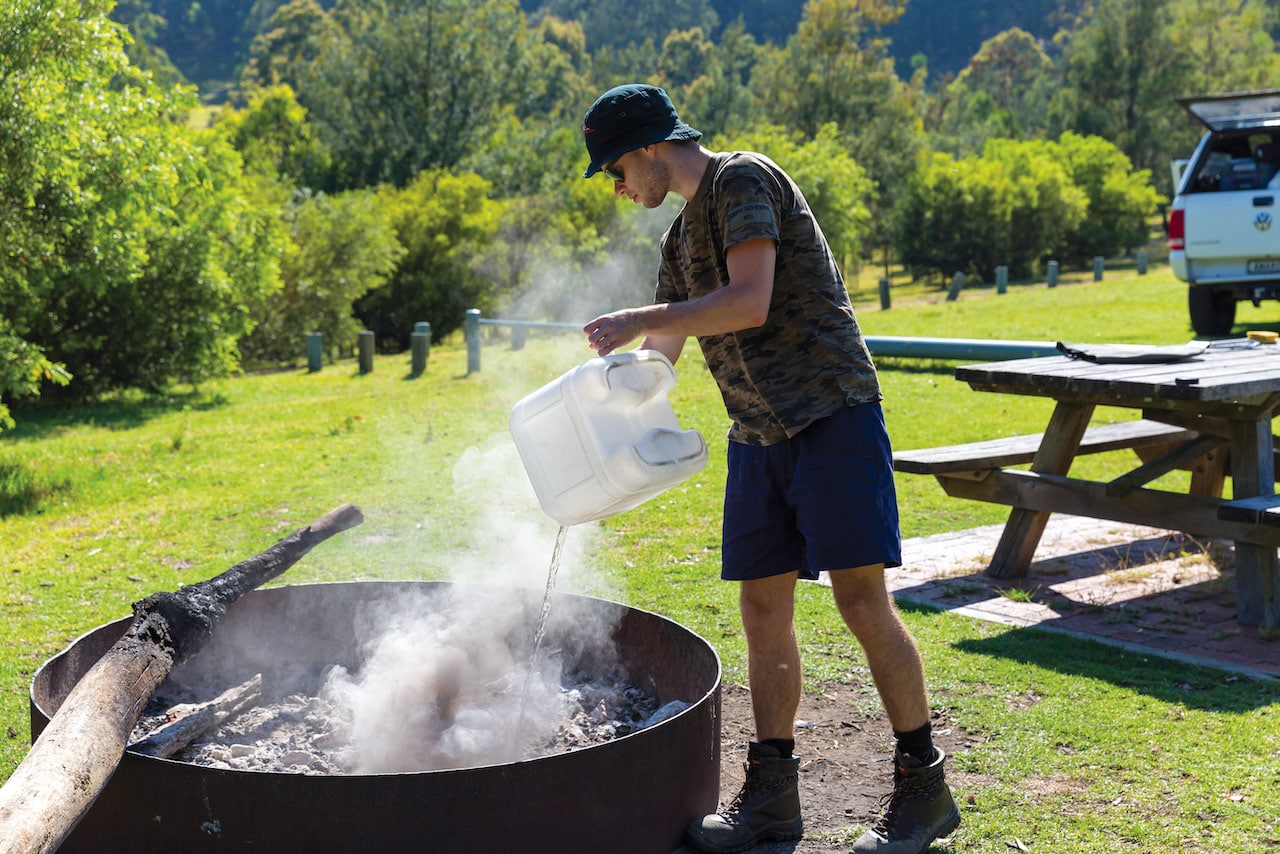
Put that Fire Out
Use water. Lots of it.
The heat generated in the bottom of the fire-pit (known as the hearth) is the dangerous factor here. Three elements are needed for fire: heat, fuel and oxygen. The oxygen is still there, as is the fuel (in the form unspent coals), but many assume that the heat is gone because there is no flame. Wrong. The heat is still there – and all it takes is a bit more breeze or a random flicker of flame and the fire is well and truly alive again. Even a random leaf blowing down onto the hearth can re-ignite the system.
It is essential to get rid of the HEAT. Douse that fire in lots of water and if it no longer hisses and throws up steam, then it is safe. Only then is it safe.




